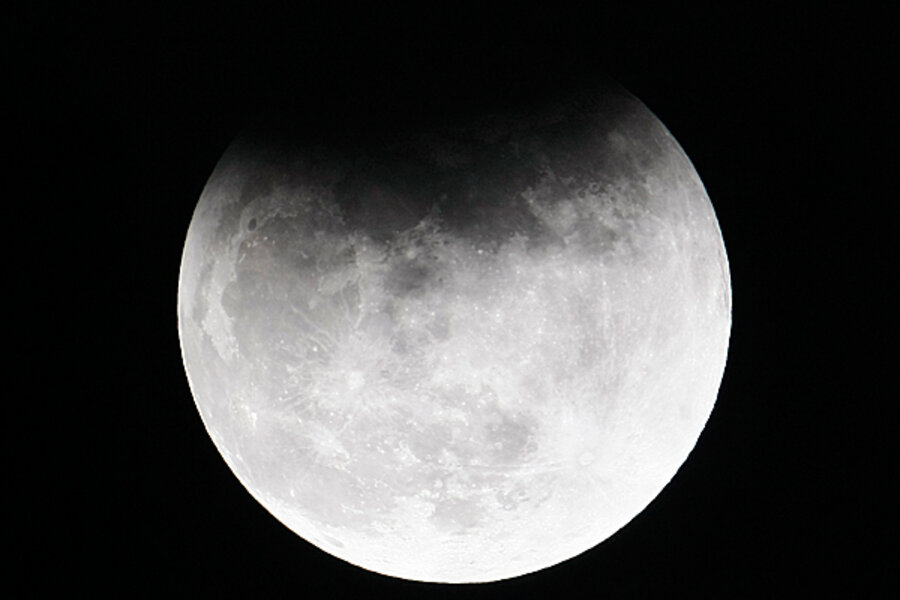Lunar eclipse wows skywatchers
Loading...
A partial lunar eclipse that took a shadowy bite out of the nearly full moon early Saturday thrilled some skywatchers in North America who happened to be in regions where the phenomenon was visible.
During the partial lunar eclipse, the moon passed through just part of the Earth's shadow, so was only partially obscured for several hours. The eclipse began at about 2:50 a.m. Pacific Daylight Time on Saturday and lasted several hours, but it was best visible to skywatchers in the western and central parts of North America – giving them a cosmic reward for rising early on a weekend.
Saturday's eclipse also occurred a few hours before the full moon of June and occurred low on the Earth's horizon, which was expected to make the moon appear larger than normal because of the "moon illusion." Some scientists attribute the effect to the human mind's attempt to make sense of the moon in relation to objects on the horizon.
In Scottsdale, Ariz., skywatcher Sid Leach caught sight of the partial lunar eclipse while preparing for a morning workout. [Another photo of the partial lunar eclipse.]
"I suddenly remembered the lunar eclipse and jumped up to look out the window," Leach told SPACE.com in an e-mail. "As I pulled back the curtains, there was the moon sinking low in the western sky, and halfway covered by the Earth's shadow!"
At the lunar eclipse's peak, about 54 percent of the moon was obscured. That maximum coverage was expected to occur at 4:38 a.m. Pacific Daylight Time on Saturday, according to a NASA announcement. The partial lunar eclipse was also expected to be visible from India, Japan and parts of East Asia, though it occurred at sunset Saturday evening (local time) in those regions.
In California, skywatcher Scott Kardel awoke early to catch the eclipse at Palomar Observatory atop Palomar Mountain, where he serves as the public affairs coordinator.
"Partial eclipses can be tricky," Kardel wrote in a blog post of his lunar eclipse observations. "To capture the illumination on the eclipsed portion of the moon you pretty much need to overexpose the rest."
Like Leach, Kardel's partial lunar eclipse photos show the moon low on the horizon, with a big bite missing. But Kardel got an extra bonus: The International Space Station.
"Much earlier, just before the maximum eclipse we had a pass of the International Space Station," Kardel wrote. "Fortunately, I was able to switch targets in time."
In his long-exposure space station photo, the orbiting laboratory appears as a streak of light passing just to the side of the bright planet Jupiter.
In fact, the International Space Station was flying in near continuous sunlight over the weekend as it orbited the Earth at an altitude of about 220 miles (354 km). That meant the space station was visible, weather permitting, multiple times over some parts of North America, though the solar line-up was expected to end today.
Saturday's partial lunar eclipse is the first of two cosmic events involving the moon over the next few weeks.
The moon will pass in front of the sun in a total solar eclipse on July 11, though it will be visible only from parts of the South Pacific Ocean.
The next lunar eclipse will occur on Dec. 21 and will be a total lunar eclipse. That lunar eclipse, according to NASA officials, should be visible to skywatchers across most of North America.





